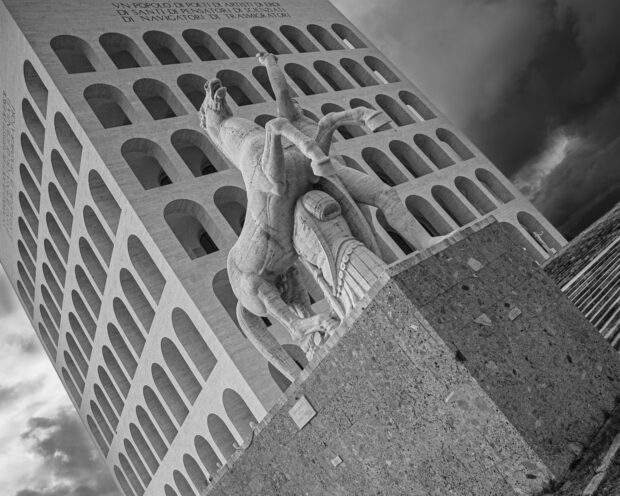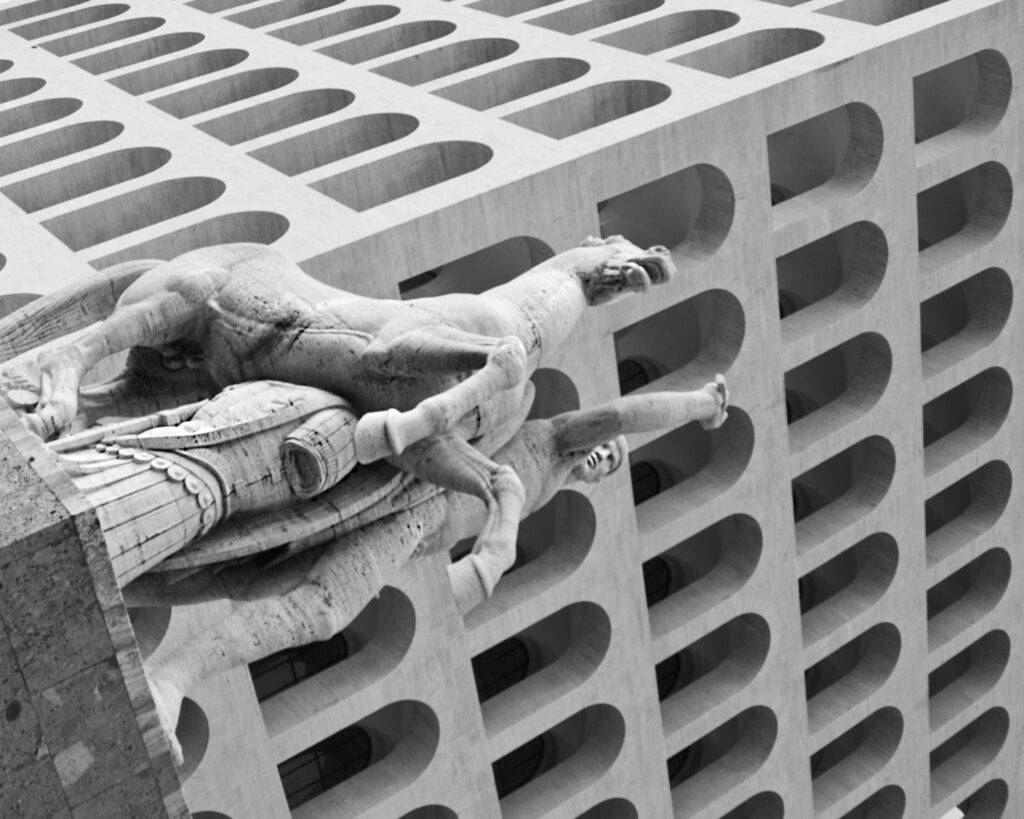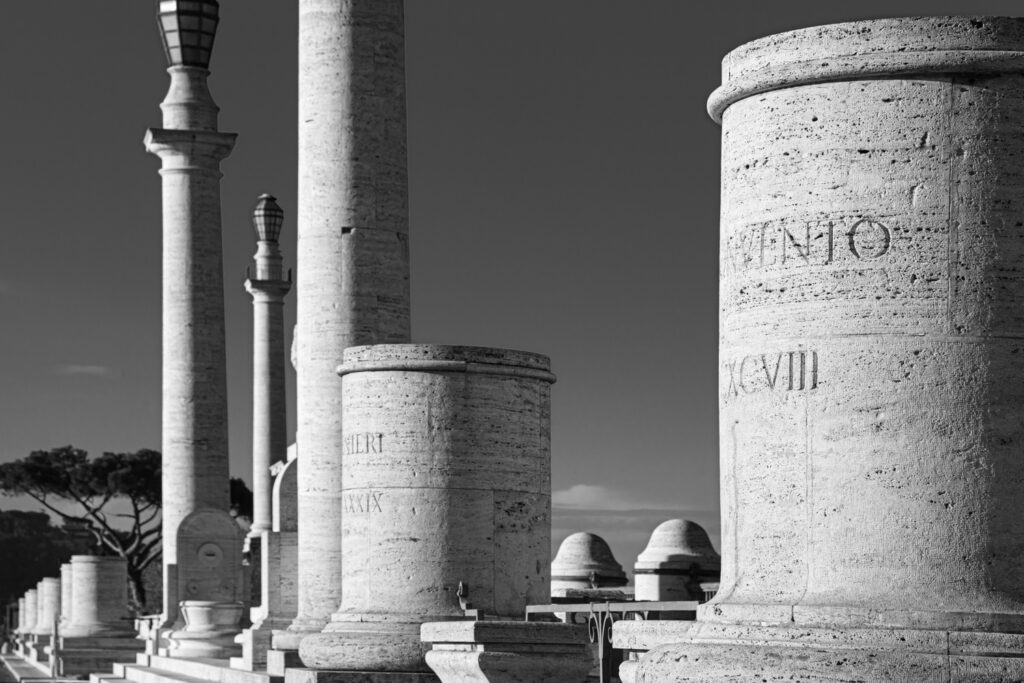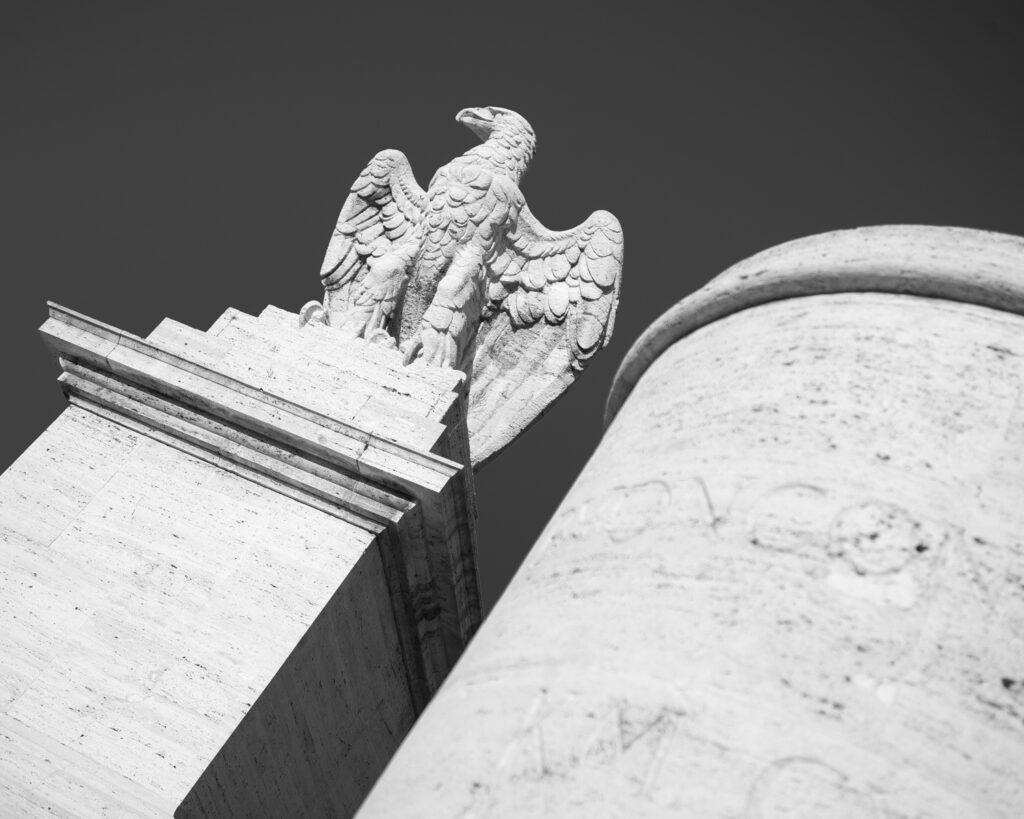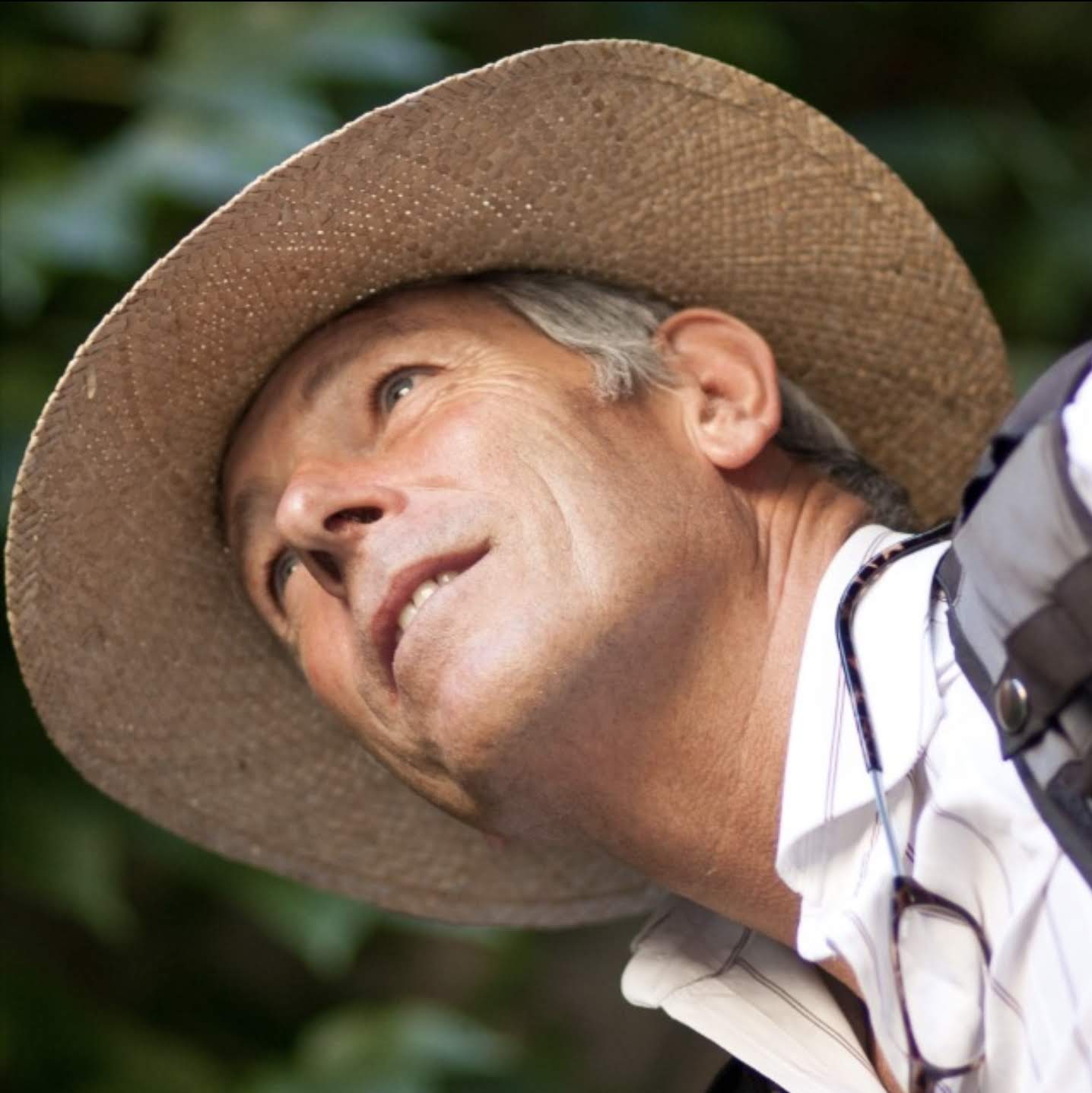Architecture in Rome thrived under fascism although there were some shocking demolitions involved in order to clear the way for Mussolini’s new Roman Empire. Some projects were halted during the war years and only completed afterwards. Known as Italian Rationalism it is often unfairly derided as ‘fascist architecture’.
The most notable building is the edifice commonly known as The Colosseo Quadrato (Square Colosseum) designed as part of the EUR project in 1938. It is officially called The Palace of Italian Civilisation and was designed for the 1942 World’s Fair that was cancelled in 1941 following Mussolini’s declaration of war on Britain and France in 1940. It was not completed till 1953. The frame is reinforced concrete clad with Travertine limestone. Atop the building incised in giant letters are the words from a speech Mussolini made in 1935, ” A people of poets, artists, heroes, saints, thinkers, scientists, navigators, migrants.” No one could take issue with this list.
The statuary, in Carrara marble, was added from 1942 on. The statues in the arches on the ground floor, represent trades, arts and sciences, while the four equines represent the Dioscuri, Castor and Pollux. Although the building has featured in numerous films to illustrate solid Italian clerical-conservatism, I find it an extraordinary radical style of architecture rooted in the classical past. It is also most photogenic in any season or light.
The Flaminia Bridge was started in 1938, damaged in WW II and not completed till 1951. It features in the 1993 film Dear Diary, and the left-wing director Nanni Moretti is vociferous in his love for the architecture – despite its Fascist origins. The architect, Armando Brasini was popular with the fascist regime and would have demolished large swathes of central Rome as part of a Le Corbusier-style planning revolution in the late 1920s if he had had his way. He was responsible for the architecture and urban planning in various parts of Mussolini’s empire such as Tripoli and Tirana, Albania. He designed many remarkable buildings, but worked little after the war. His grandson lives in Orvieto.
I will publish more posts shortly about Rome’s architecture.
